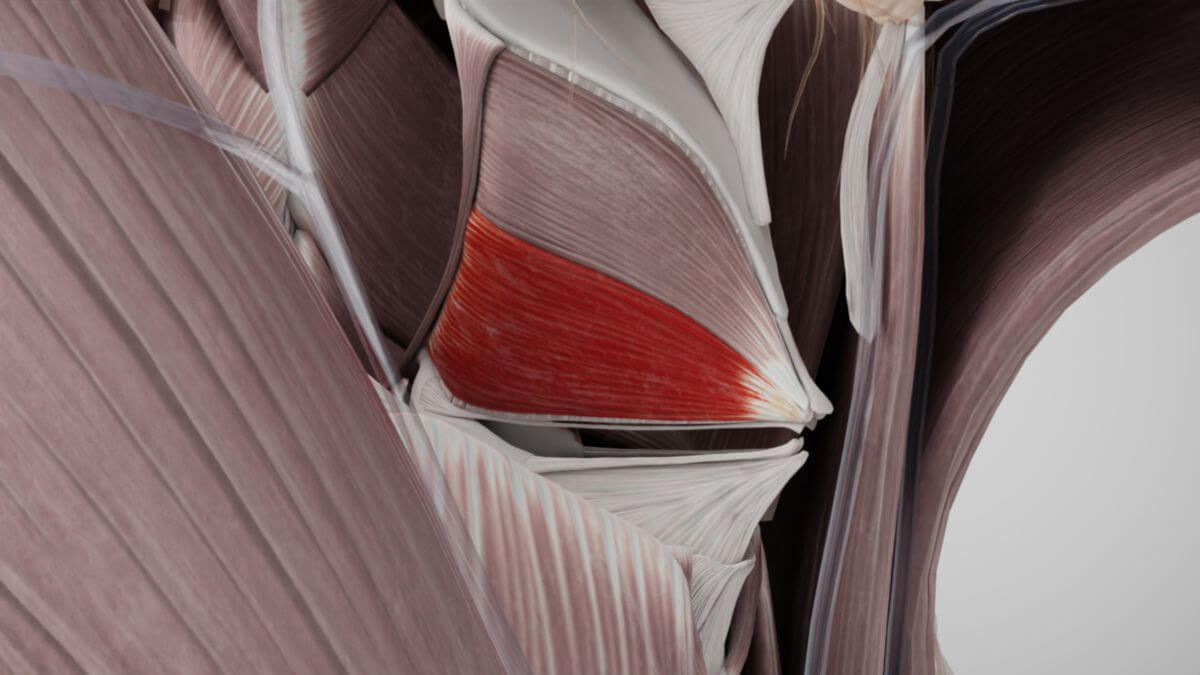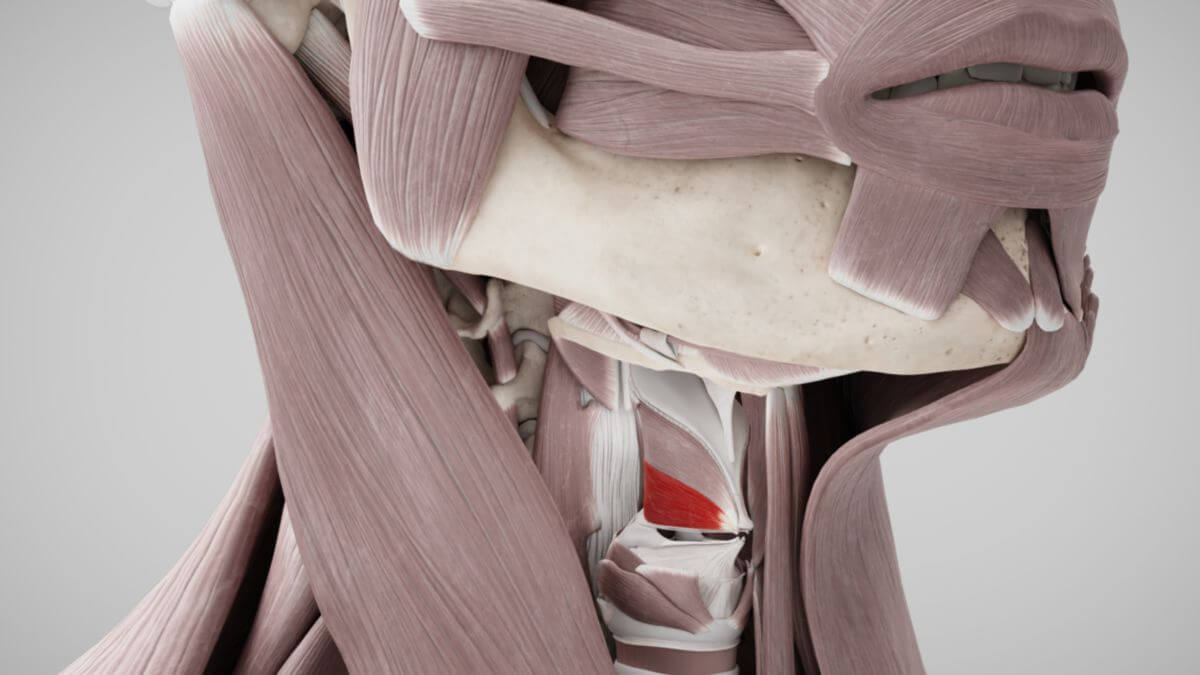Corpus: Thyroarytenoid muscle
1. Definition
2. Course
The thyroarytenoid muscle forms a muscular ring around the glottis. It includes the vocal muscle (internal part), which is a medial division of the thyroarytenoid muscle proper (external part). The vocal muscle attaches to the vocal ligament from the lateral side and helps cushion the vocal fold. The thyroepiglottic part is a separate part of the external part, which extends into the aryepiglottic fold.
| Section | Synonyms | Origin | Insertion |
|---|---|---|---|
| External part | Lateral part, externus | Internal surface of the thyroid cartilage | Muscular process and lateral surface of the arytenoid cartilage |
| Internal part | Vocal muscle, medial part, vocal part, internus | Vocal process of the arytenoid cartilage | |
| Thyroepiglottic part | Thyroepiglottic muscle | Lateral side of the epiglottis |
3. Innervation
The thyroarytenoid muscle is primarily innervated by the inferior laryngeal nerve, a branch of the recurrent laryngeal nerve. Recent studies in animal models suggest that the thyroarytenoid muscle may also receive innervation from the superior laryngeal nerve, with possible connections between the two laryngeal nerves.[1]
4. Function
- External part: Constricts the intermembranous part of the glottis during resting respiration.
- Internal part (vocal muscle): Facilitates the complete closure of the glottis and fine-tunes the tension of the vocal folds after initial tensioning by the cricothyroid muscle.
- Thyroepiglottic part: Influences the shape of the laryngeal vestibule and the laryngeal ventricle.
5. Clinic
A lesion of the recurrent laryngeal nerve, commonly referred to as recurrent paresis, typically affects the thyroarytenoid muscle along with other internal laryngeal muscles. The primary symptom of such a lesion is hoarseness.
6. Source
- ↑ Paskhover et al. Thyroarytenoid cross-innervation by the external branch of the superior laryngeal nerve in the porcine model, Laryngoscope. 2015;125(1):177-179, retrieved on 28 May 2020





